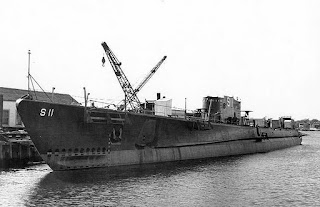Never as well publicized as its counterpart Royal Air Force, Britain’s Naval Air Arm nevertheless made its presence felt in every major action of the sea war
This happens to be a "TWO PART" article....so if your in for "darn good read"...and your into the "airborne" part of WW II's "sea fight"....this will certainly be an eye opener for you.
I'm going to put an 'intro' here so you can get a feel for what these "two parts" entail....
With his usual steely resolve L/Cmdr. Eugene Esmonde, skipper of 825 Squadron, Fleet Air Arm, climbed into the open cockpit of his Swordfish biplane torpedo-bomber knowing in all probability he would not survive the mission. At best, the task Esmonde and hi fellow 17 flyers had been assigned was suicidal for they were ordered to intercept and sink the powerfully armed German battle-cruisers Scharnhorst, Gneisenau, and Prinz Eugen. Detected making a sudden break from their heavily defended anchorages at Brest on 12 February 1942, the trio was making a desperate attempt to return to the Baltic’s less-hazardous
waters.
Compounding the dangers of this suddenly organized mission was the knowledge that the German ship were escorted by several squadrons of elite German fighters under the command of Luftwaffe ace Adolph Galland; that the deadly anti-aircraft batteries of the battle-cruisers had been tripled during their lengthy stay in occupied France. What’s more, the warship’s daring daylight departure, which came to be known as the “Channel Dash” or Operation Cereberus, was conducted in broad daylight thereby denying the lumbering Swordfish the cover of night.
Accepting their assignment with stoic indifference, squadron commander Esmonde, who a day earlier had been awarded the Distinguished Service Order for leading the daring assault on the Bismarck in May 1941, took off from the Naval air base at Manston shortly after noon. Once airborne, Esmonde learned that only one squadron of Spitfires was available to protect his flight of six 90-mph fabric-cover Swordfish, or “String Bags,” as they were affectionately known............................
PART ONE
PART TWO
Hope you enjoy hearing about this tad of history
PART ONE
PART TWO
Hope you enjoy hearing about this tad of history












